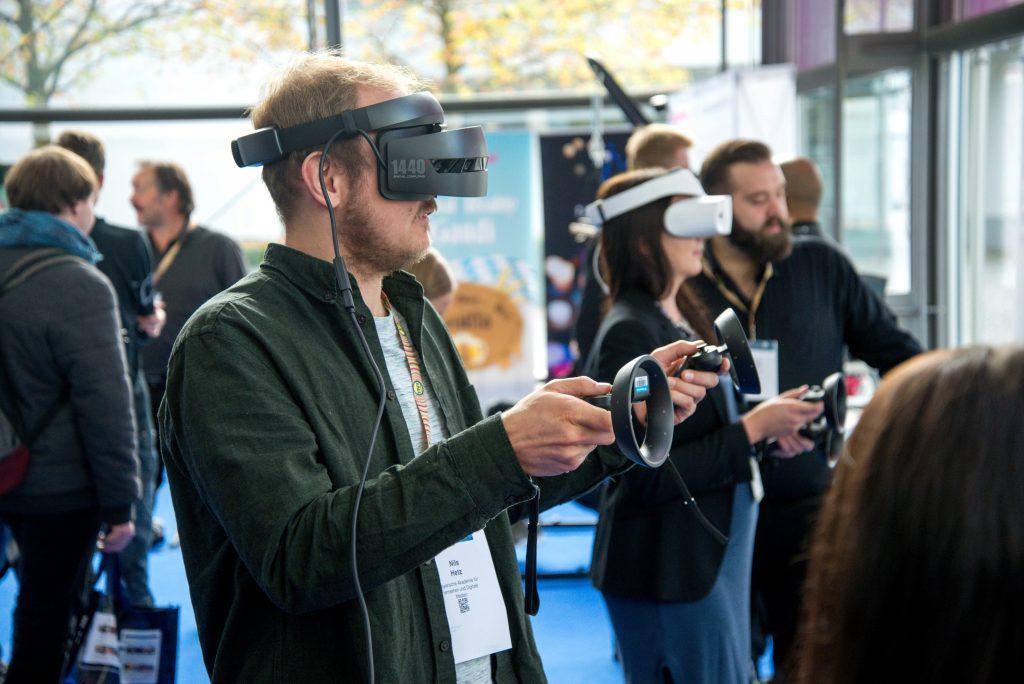
Exploring the Future of Extended Reality in 2024
- May 30, 2024
Extended Reality (XR) is an umbrella term encompassing Virtual Reality (VR), Augmented Reality (AR), and Mixed Reality (MR). These technologies have significantly evolved, transforming various sectors including entertainment, education, healthcare, and beyond. As we step into 2024, let’s delve into the advancements and the potential future impacts of XR.
1. Technological Advancements
Improved Hardware:
In 2024, XR hardware has become more sophisticated and accessible. Devices like VR headsets and AR glasses are now lighter, more comfortable, and offer higher-resolution displays. For instance, the latest VR headsets now feature 8K resolution per eye, significantly enhancing the immersive experience.
Enhanced Tracking and Interaction:
Tracking technologies have also seen substantial improvements. Advanced sensors and cameras now offer more accurate motion tracking, enabling more natural and intuitive interactions within virtual environments. This progress is evident in devices like Meta’s Quest 3 and the upcoming Apple Vision Pro, which provide seamless hand and eye-tracking capabilities.
5G and Edge Computing:
The rollout of 5G networks and advancements in edge computing have reduced latency and improved data processing speeds. This has allowed for more complex XR applications to run smoothly on mobile devices, facilitating on-the-go experiences and broader adoption in various fields such as remote assistance and real-time data visualization.
2. Applications Across Industries
Healthcare:
XR is revolutionizing healthcare by providing innovative solutions for training, therapy, and patient care. Surgeons can now practice complex procedures in a risk-free virtual environment, while AR is being used to assist in real-time surgeries, improving precision and outcomes. Moreover, VR therapy has become a popular method for treating mental health issues, such as PTSD and anxiety, offering patients immersive therapeutic experiences.
Education and Training:
The education sector is leveraging XR to create immersive learning environments. Virtual classrooms and labs enable students to interact with 3D models and simulations, enhancing understanding and retention of complex subjects. Additionally, companies are using XR for employee training, providing realistic scenarios for skill development without the risks associated with real-world training.
Entertainment and Media:
XR continues to transform the entertainment industry. VR gaming has reached new heights with more engaging and interactive gameplay. AR is also being integrated into live events and concerts, offering audiences augmented experiences that blend the real and virtual worlds.
Software Solutions by Inverge Tech:
Companies like Inverge Tech are at the forefront of developing innovative XR solutions. Inverge Tech provides a range of software solutions designed to enhance XR experiences across various industries. Their platforms enable businesses to create, manage, and deploy XR applications effectively, ensuring seamless integration and superior performance. Whether it’s developing custom AR apps for retail or VR training modules for healthcare, IInverge Tech offers comprehensive solutions tailored to meet specific industry needs.

3. Challenges and Future Directions
Privacy and Security:
With the increasing use of XR, concerns around privacy and data security have become more pronounced. Ensuring that user data is protected and that XR systems are secure from cyber threats is crucial for the technology’s continued growth.
Accessibility and Inclusivity:
Making XR accessible to all, including individuals with disabilities, remains a significant challenge. Developers are working on creating more inclusive experiences, but there is still a long way to go in ensuring that XR technologies are usable by everyone.
Ethical Considerations:
As XR blurs the lines between the virtual and real worlds, ethical issues regarding consent, content creation, and the potential for addiction need to be addressed. Establishing guidelines and regulations will be essential to mitigate these concerns.
Conclusion
As we navigate through 2024, Extended Reality continues to expand its horizons, reshaping how we interact with the digital and physical worlds. With ongoing advancements in technology and growing applications across various sectors, XR holds the promise of creating more immersive, efficient, and transformative experiences. However, addressing the associated challenges will be critical in realizing the full potential of this groundbreaking technology.
References
- TechRadar. (2024). “Best VR Headsets 2024: The Top Picks for Immersive Gaming.”
- The Verge. (2023). “Meta Quest 3: What We Know So Far.”
- Apple Newsroom. (2023). “Apple Vision Pro: The Future of Augmented Reality.”
- Ericsson. (2024). “5G and Edge Computing: Transforming the XR Experience.”
- Journal of Medical Internet Research. (2023). “The Impact of VR on Surgical Training.”
- Psychology Today. (2023). “Virtual Reality Therapy: A New Frontier for Mental Health.”
- EdTech Magazine. (2024). “XR in Education: Transforming Classrooms and Training.”
- Variety. (2024). “The Future of XR in Entertainment: More Than Just Games.”
- Inverge Tech (2024). “Inverge Tech: Leading the Way in XR Solutions.”
- Wired. (2023). “Privacy in XR: Navigating the New Digital Frontier.”
- Inclusive Design Research Centre. (2023). “Making XR Accessible: Challenges and Solutions.”
- IEEE Spectrum. (2024). “Ethical Considerations in XR: Navigating the Moral Landscape.”
